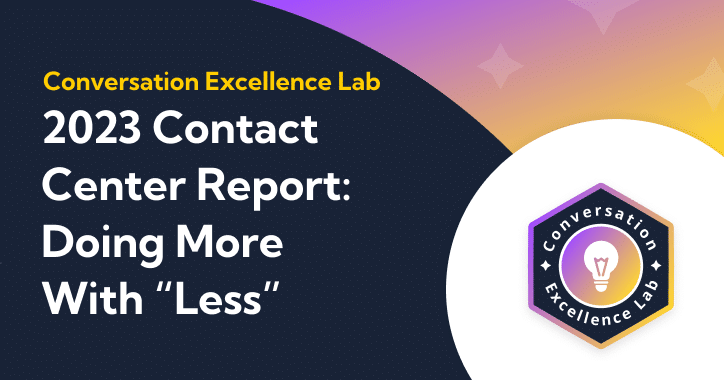Key Takeaways
- The average age range across industries was 35-41, with the oldest working in Travel & Hospitality and Manufacturing, and the youngest working in Retail and Financial Services.
- The most female industries: Healthcare (79%), Travel & Hospitality (68%), Insurance (63%) The most male industries: Construction (75%), Logistics (75%), Home Improvement (75%).
- The most educated people worked in Financial Services, Telecommunications & IT, and Government & Non-Profit. The least educated people worked in Collections, Retail, and Travel & Hospitality.
- The highest-paid industry by average hourly wage is Construction, at $21.73 an hour. The lowest is Travel & Hospitality at $15.85 an hour. The highest-paid industry by average salary is Home Improvement at $95,000. The lowest is Retail at $58,500.
- Government & Non-Profit has the biggest pay gap based on salaries, with an additional $32,500 favoring male salaries. The smallest gap is in insurance, where males’ salaries are only $659 more than females.
- Logistics has the highest average tenure at 5.41 years. Utilities has the lowest average tenure at 2.58 years.
- The top 3 reasons respondents joined any industry are opportunities for advancement, pay, and learning a new skill. Bottom 3 are working with people, joining a growing industry, and needing a job fast.
Every contact center is different, and every industry has its own unique benefits. But how do these benefits affect contact center workers? We surveyed over 2000 agents and managers across all industries to better understand their differences, similarities, and unique traits.
These findings are part of our series on agent attrition in today’s contact centers. Check out our full report here.
Subscribe to future Conversation Excellence Lab reports below:
Demographics by Industry
Age
The average age of a contact center worker across all industries is 35-41, regardless of the number of respondents in each industry. Retail and Financial Services had the youngest average age, 35.4 and 36 respectively. Travel & Hospitality and Manufacturing had the oldest average age, 41.4 and 40.1 respectively.
Figure 1: Average Age by Industry
While we know that a worker’s age impacts their motivations in their job, this suggests that the majority of workers across each industry are in fairly similar life phases.
This is a useful metric by which to gauge our other findings below, including wages, education, and tenure.
Gender
The percentage of male versus female workers varies widely between the surveyed industries. Healthcare, Travel & Hospitality, and Insurance have the highest percentage of female workers with 79%, 68%, and 63% respectively. Construction, Logistics, and Home Improvement have the highest concentration of male workers, all three with 75%. By comparison, roughly 47% of our survey’s total respondents identified as male, with the remaining 53% identifying as female, indicating either end of the range is well above average.
Figure 2: Gender Breakdown by Industry
Education
When asked for their education level, workers’ responses were categorized based on completed degrees and assigned a numeric value:
- Middle School or Below — 1
- High School Diploma/GED — 2
- Two-Year College Degree — 3
- Four-Year College Degree — 4
- Advanced College Degree — 5
Based on this scale, the average education level across all industries ranges between 2.7 and 3.68. The most educated industries are Financial Services (3.68) and Telecommunications & IT (3.6) while the least educated industries are Retail (2.74) and Collections (2.7).
Figure 3: Average Education Level by Industry
It’s notable that the two industries with the lowest average age, Retail and Financial Services, have almost the largest gap between their respective education levels. However, It’s also worth noting that Financial Services was one of the industries with the highest percentage of respondents who self-identified as ‘Executive Leadership’ and ‘Retail’ had the lowest, which may explain this difference.
Wages by Industry
Average Pay
Between each industry, the average pay varies by a wide margin. Respondents included both workers with hourly wages and annual salaries, and includes both front-line workers and leaders. By hourly wage, Travel & Hospitality averages the lowest hourly wage at $15.85 an hour. The highest, Construction workers, average $21.73 an hour.
Figure 4: Average Hourly Wage by Industry
By annual salary, Retail has the lowest average annual salary at $58,000. The highest, Home Improvement, nearly doubles Retail at $95,000.
Figure 5: Average Salary by Industry
These pay gaps between industries might be due to differences in average tenure. As we explored in our report on Age and Motivations in the contact center, industries with longer average tenures are positively correlated with higher pay. As we explore below, some of the industries with the highest average tenures — such as Manufacturing and Logistics — also have higher average wages. Conversely, those with lower average tenures, such as Retail, have lower average wages.
Gender Pay Gaps
In the United States, the average pay gap between males and females has remained relatively consistent for the past decade: Female workers earn 84% of what men earn, on average. This holds relatively true based on our survey. Across all industries, women with salaries earn on average 84.8% of mens’ salaries, while women with hourly wages earn on average 88.7% of men’s wages.
However, some industries are better than others. Based on salaries, Government & Non-Profit has the biggest pay gap, with an additional $32,500 favoring male salaries. The smallest gap is in Insurance, where males’ salaries are only $659 more than females. Two industries, Home Improvement and Collections, did not report any womens’ salaries.
Only one industry, Utilities, has a pay gap favoring women — $10,000 more on average. This could be due to a small sample size: Only 20 respondents identified as working in Utilities, with an equal number of men and women identifying as salaried workers.
Figure 6: Average Salary by Industry and Gender
Based on hourly wages, Manufacturing has the biggest pay gap, with an additional $6.02 per hour favoring men. The smallest gap is in Healthcare, where men earn an additional $0.17 more than women. Two industries, Professional Services and Construction, reported a gap favoring women — $1.27 and $0.27 respectively.
Figure 7: Average Hourly Wage by Industry and Gender
Tenure/Motivations by Industry
Tenure
In the U.S., the median tenure for workers is 4.1 years. Our survey found this to be true across all contact centers, with the median tenure being 4.19, and the average being 4.16 years. The Utilities industry had the lowest average tenure, with 2.58 years. The Logistics industry had the highest average tenure, with 5.41 years.
Figure 8: Average Tenure by Industry
As we explore below, contact center workers have many different motivations for joining their respective industries. These could impact how long they are willing to stay in a position, especially for industries like Utilities that have a large portion of workers seeking advancement opportunities.
Motivations
In our survey, we wanted to understand what drives workers to join a contact center. Respondents were given seven choices for their primary reasons:
- Working with People
- Opportunity for Advancement
- Pay and/or Commission
- Opportunity to Learn a New Skill
- Needing a Job Fast
- Flexible Work Schedule
- Join a Growing Industry
The top reason on average was Opportunity for Advancement at 21.97% of all respondents. The bottom reason was Working with People at 7.37%. However, the top reason for each industry does vary:
Figure 9: Breakdown of Motivation to Join Industry by Industry
Some industries, such as Utilities and Logistics, are largely driven by opportunities for advancement. In others, such as Retail and Real Estate, opportunities for advancement are relatively equal or less than other factors like Pay or Learning a New Skill.
Additionally, these motivations reflect those we saw when examining age groups: Up to age 44, most workers are motivated by their advancement opportunities. 45-54-year-olds were most motivated by their pay.
Conclusion
Our data demonstrates that the contact center industry is not a homogenous block, and is instead comprised of a wide variety of demographics, earning potential, and worker motivations. Not only is this demonstrated by age groups, but also across the individual industries within the contact center world. No two industries are equally alike.
As such, when managers and executives consider how to increase worker satisfaction and decrease turnover, the above data should prove useful. Look to other industries to consider how they may be achieving success, and consider how that may impact your teams.
Click here to subscribe to future Conversation Excellence Lab reports.
Sources
Balto. (2022, March 29). Contact Center Attrition: What Agents Want in 2022 – Balto Ai. RSS. Retrieved February 15, 2022, from https://www.balto.ai/research/contact-center-attrition-2022/
Barroso, A., & Brown A. (2021, May 25). Gender pay gap in U.S. held steady in 2020. Pew Research Center. Retrieved February 15, 2022, from https://www.pewresearch.org/fact-tank/2021/05/25/gender-pay-gap-facts/
Cite this report
Balto. (2022, February 15). 7 Industry Insights for the Contact Center – Balto Ai. RSS. Retrieved from https://www.balto.ai/research/7-industry-insights/






